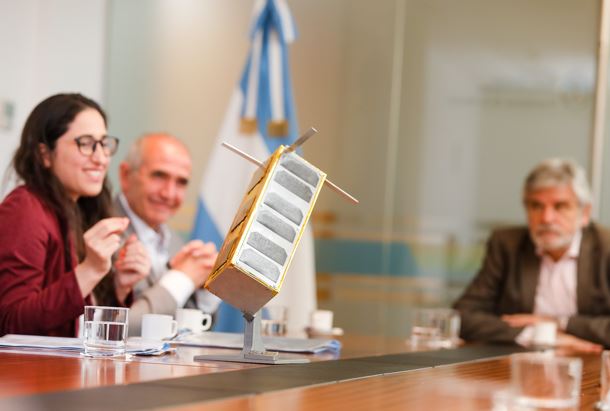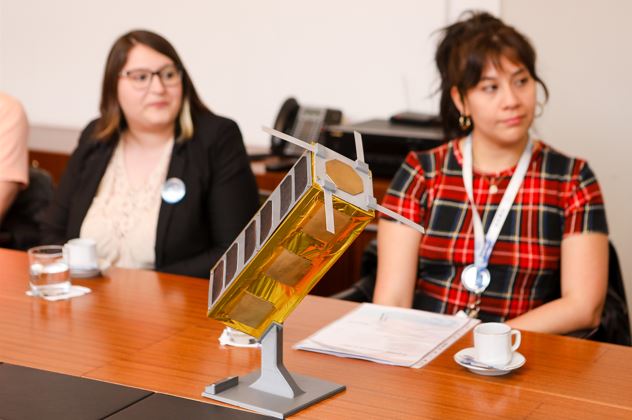A Argentinian university satellite could make history: it is just a few steps away from being launched into space. It was developed by a team from the Faculty of Engineering of the National University of La Plata (UNLP).
Engineers and scholarship students are already working on the final stage of integration and complete functional tests of the USAT 1.
The Argentinian university satellite that will make history

The USAT1 is the first of a series of 5 projected CubeSats by the Faculty of Engineering. It is a small satellite that measures 10 cm by 10 cm by 34 cm and weighs around 4 kilograms.
Its mission will be a technological demonstration of scientific techniques using GNSS for Earth observation. These techniques that use GNSS signals allow for atmospheric observations, such as pressure, temperature, humidity, depending on its orientation.
It also allows for soil observations, such as humidity, altimetry, soil roughness, vegetation.
Developers
The team leading the initiative is made up of researchers from the Aerospace Technology Center of the Aerospace Engineering Department and the Electronic Navigation and Telecommunications Systems group of the Electrical Engineering Department.
They also have the collaboration of the National Atomic Energy Commission and the National Commission on Space Activities (CONAE).
The dean of the Faculty of Engineering, Marcos Actis, highlighted that, abroad, a satellite with similar characteristics has an approximate cost of 200 thousand dollars, while the locally developed one required an investment that does not exceed 70 thousand dollars (contributions for the purchase of materials and the payment of scholarships for students and graduates).

“Projects like this, and others we have in electromobility, are funded with resources generated by the Aerospace Technology Center through transfer work,” he stated.
Engineer Sonia Botta, a member of the CTA and project coordinator, mentioned that “we are integrating the entire satellite with flight hardware, that is, the components that will fly, and conducting tests of all systems as a whole. In conclusion, making sure that the satellite works as a whole”.
Launch Date
The university satellite built in Argentina will be taken to Spain in March, where it will join the device that will escort it into space. Its launch is scheduled for June of this year in the United States.
Do you already know our YouTube channel? Subscribe!

